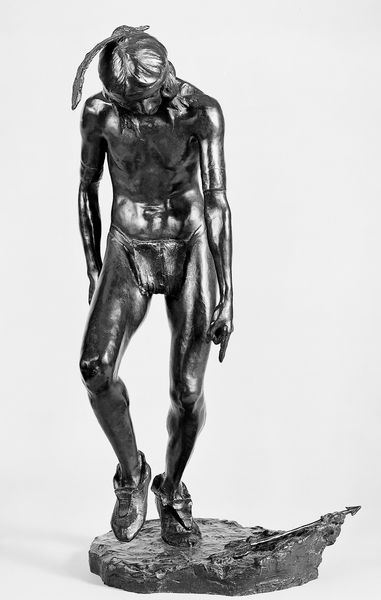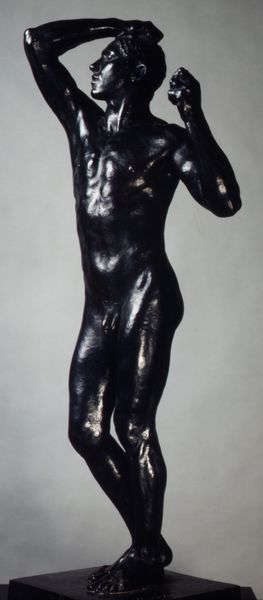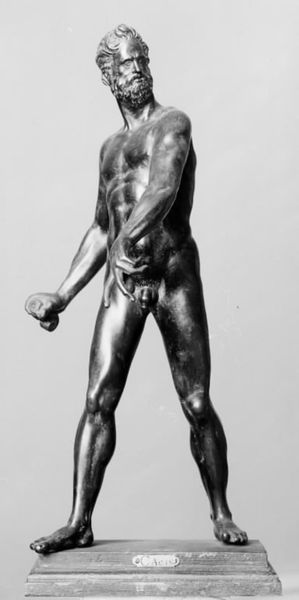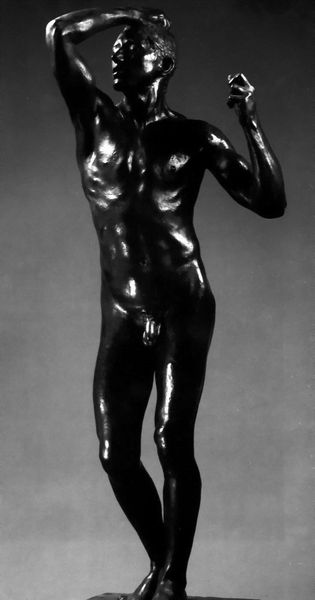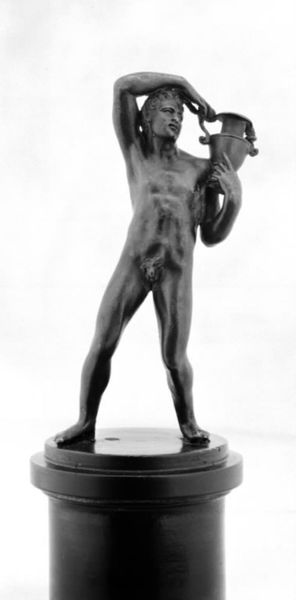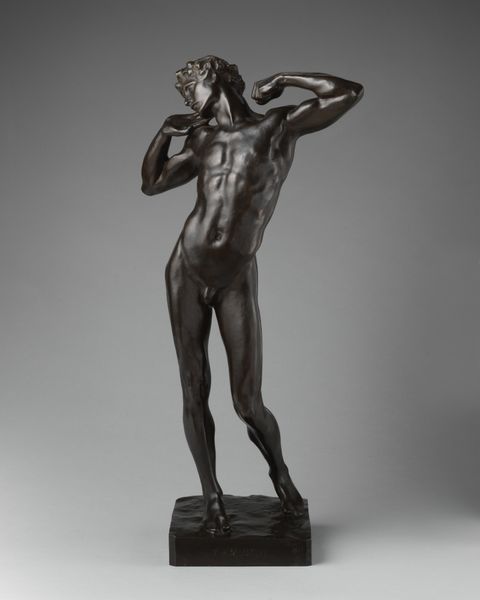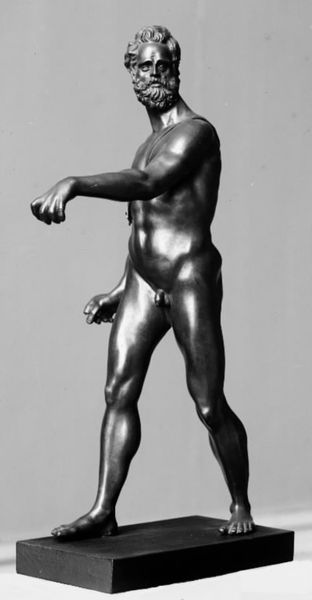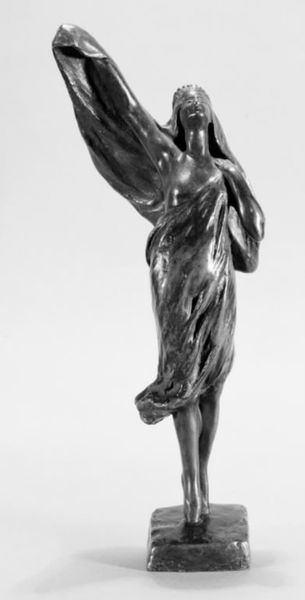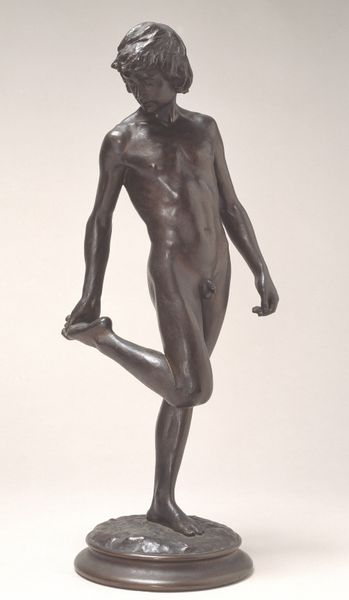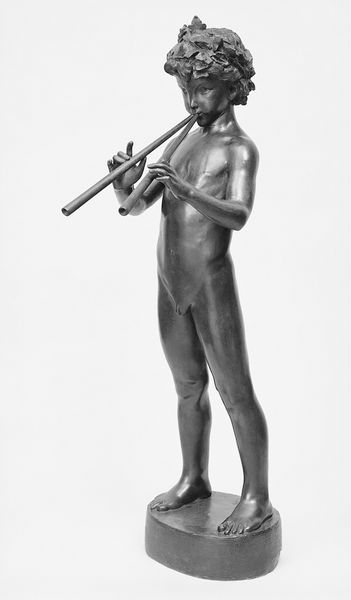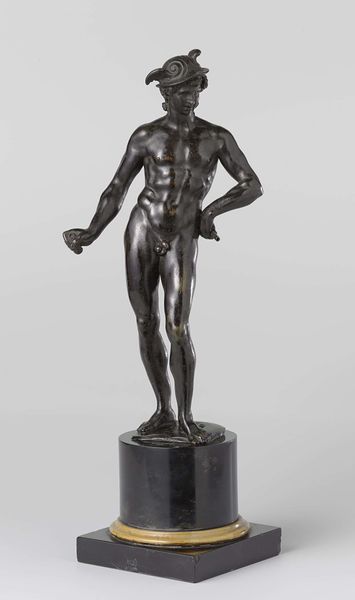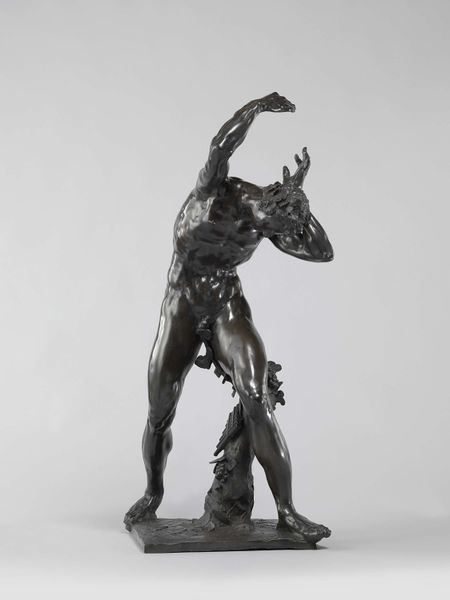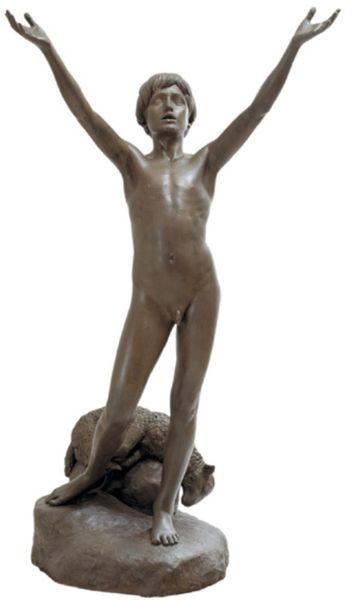
The Young Sophocles Leading the Chorus of Victory after the Battle of Salamis 1885 - 1927
0:00
0:00
bronze, sculpture
#
sculpture
#
greek-and-roman-art
#
classical-realism
#
bronze
#
figuration
#
sculpture
#
musical-instrument
#
nude
Dimensions: 92 1/4 x 53 x 32 1/2 in. (234.3 x 134.6 x 82.6 cm)
Copyright: Public Domain
John Talbott Donoghue made this bronze sculpture in the late 19th century. The image depicts the young Sophocles leading a chorus celebrating the Greek victory at the Battle of Salamis. The Battle of Salamis was a pivotal naval engagement in 480 BC, where the outnumbered Greek fleet defeated the invading Persian navy, securing Greek independence and allowing for the flourishing of Athenian democracy and culture. Donoghue’s depiction of Sophocles, nude and triumphant, draws heavily on classical Greek ideals of beauty and athleticism. These ideals were experiencing a revival in European and American art academies at the time this statue was made. The late 19th century was an era of increasing nationalism and imperialism. Works like this connected contemporary Western powers to the perceived glory of ancient Greece. Sophocles, the celebrated playwright, here embodies not just artistic achievement, but also the civic values of a society that valued both artistic and military prowess. Examining exhibition records, period reviews, and the artist's biography might give us more insight into Donoghue’s motivations and how this work was received by his contemporaries. By situating it in its original social context we might have a fuller appreciation of the sculpture.
Comments
No comments
Be the first to comment and join the conversation on the ultimate creative platform.
